Why do so many savvy business owners spend a fortune on shipping? Because they don’t rate shop. If you’re a business owner, you’ve likely spent plenty of time negotiating with suppliers and optimizing your operations to reduce labor costs. But when was the last time you took a hard look at your shipping rates? Do you proactively set a shipping strategy and negotiate shipping rates, or do you simply dismiss outrageous shipping rates as a painful part of doing business?
If the thought of developing a shipping strategy gives you anxiety, we’re here to help you breathe through it. By the end of this article, you’ll be able to answer the following questions:
Contents
- What is a shipping strategy and how do I develop one for my business?
- How can I gain visibility over my shipping rates before I start rate shopping?
- How do carriers determine shipping rates, and what do I need to know to effectively rate shop?
- Should I absorb the cost of shipping or pass it on to my customers?
- What resources can I use to access real-time shipping rates?
- How do I negotiate shipping rates?
- How do I manage shipping rates in online stores?
- How Do I Negotiate Shipping Rates?
- Negotiate Your Shipping Rates to Strengthen Your Bottom Line
- How Is Your Shipping Cost Determined?
- What If You Just Forget About Shipping Rates Altogether?
What Is A Shipping Strategy and How Do I Build One?
Simply put, a strategy tells you how you get from point A to point B. In this case, you’ll need to define your shipping goals before you can detail a shipping strategy.
Here’s an example of a shipping goal most business owners can relate to:
Reduce annual shipping rates by 20% without negatively impacting customer satisfaction, order accuracy, or delivery times.
Once you have a goal, it’s time to think about the barriers or customer objections standing in the way of accomplishing it. For our cost savings goal, there are a few challenges:
- The complexity and variability of shipping rates
- High expectations from customers about cheap shipping rates with fast delivery times
- Competition from companies like Amazon who can afford to lose money on shipping
If a shipping strategy is the path that gets you from point A (expensive shipping) to point B (cost-effective shipping shipping and happy customers), these challenges are the roadblocks that stand in your way. Addressing them will make your shipping strategy clearer.
For instance, here are a few approaches you could take to tackle these challenges.
| Challenges | Potential Solutions |
| The complexity and variability of shipping rates |
|
| High expectations from customers about cheap shipping rates with fast delivery times |
|
| Competition from companies like Amazon who can afford to lose money on shipping |
|
Let’s dive into these challenges and solutions in more detail.
How Can I Gain Visibility Over My Shipping Rates Before I Begin Rate Shopping?
A big mistake business owners make is isolating the shipping rate strategy, or thinking about it in a vacuum.
Your shipping rates are part of the answer to a larger question: How much does it take to get my products to my customers and how much money do I want to make in profit?
The primary purpose of a business is to make money. So, when you’re deciding how much money to spend, it’s important to consider how shipping rates impact your profitability.
When you understand exactly how shipping rates affect your bottom line – and your business’s survival – you start rate shopping and vendor negotiations from a position of strength. You know when to continue the conversation and when to walk away.
As an initial exercise, grab a piece of paper or open a spreadsheet and list the following information.
If you only ship a few products, it’s worth conducting this exercise separately for each product.
If you ship several products, group them into categories based on cost or shipping requirements like temperature control and then conduct this exercise in batches.
- Production Cost: How much does it cost to produce your product?
- Packaging: How much does it cost to package this product, including boxes and packing materials? Does this product have specific packaging requirements (e.g., fragile product, temperature-controlled products)?
- Historical Shipping Rates: Use your warehouse management system (WMS) to determine how much you’ve spent shipping this product over the last 12 months. If you don’t have this information stored in a shipping database, talk to your accounting department or your account manager at your shipping provider, if you have one.
- Profit Margin: How much would you like to make after you’ve covered the cost of getting the product to the customer?
After you’ve conducted this exercise, you’ll understand two things:
- The factors that are impacting your costs
- How much profit you need to make this whole enterprise worth it
These are important things to know when you’re negotiating anything—whether it’s negotiating with your carriers or negotiating with yourself about how much of your shipping rates you’re willing to pass on to your customers.
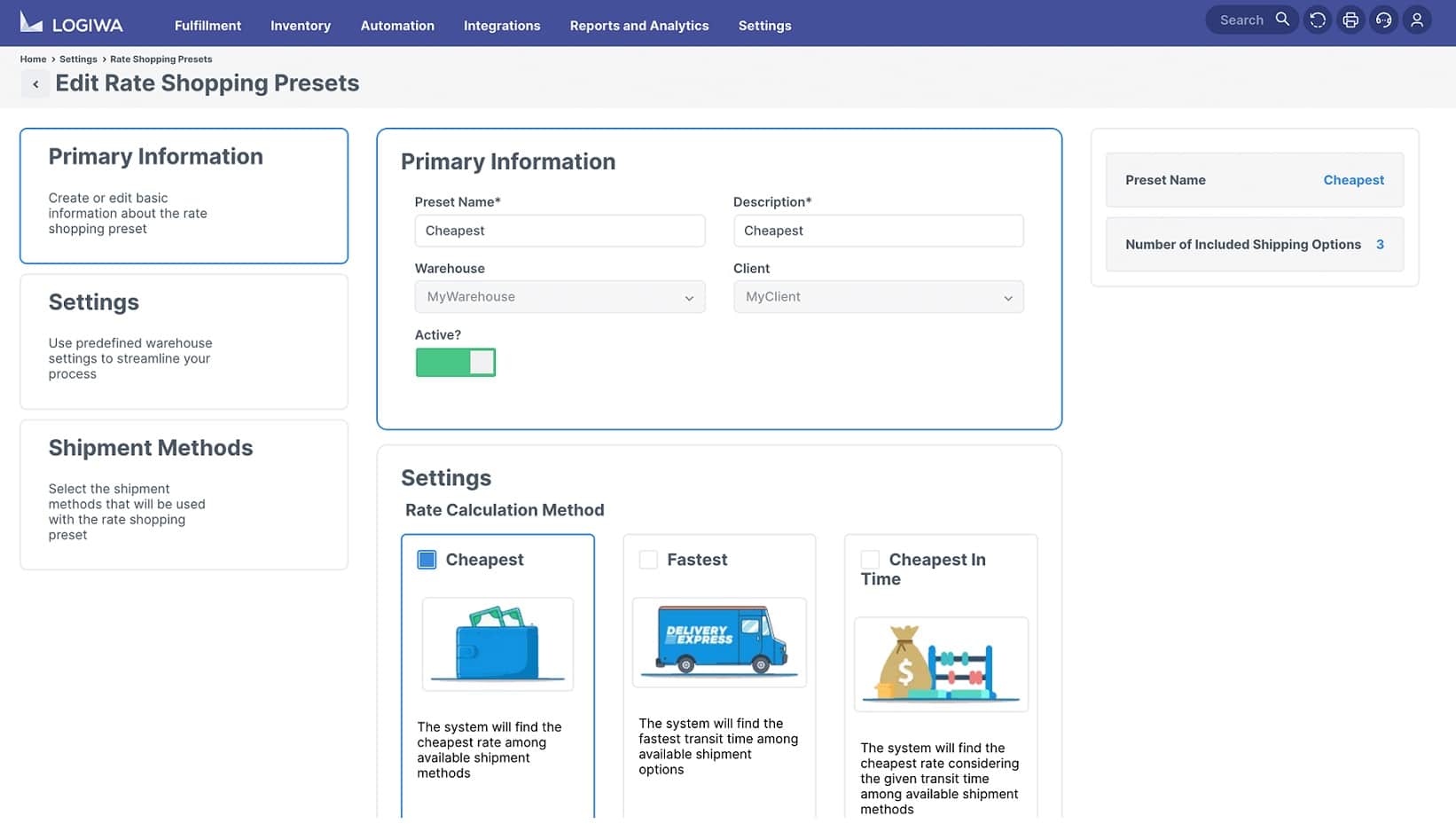
How Do Carriers Calculate Shipping Rates and What Do I Need to Know to Effectively Rate Shop?
You should be familiar with these variables to understand how shipping rates work:
- Size of your package
- Weight of your package
- Dimensional weight
- Package origin
- Package destination
What is Dimensional Weight?
Dimensional weight is the assumed “weight” of your product based on the volume of the package you ship it in.
Historically, carriers charged based on weight. When the online marketplace started booming, they quickly realized that lightweight packages in large boxes were taking up just as much room in their trucks as a similarly sized heavy package. So, they introduced dimensional weight pricing.
Today, most carriers calculate the actual weight of your package and your package’s dimensional weight, then use whichever is greater to determine cost.
What Are The Lesser-Known Shipping Rate Factors?
Shipping Zones
Shipping companies divide the country or world into zones. Shipping to a destination in the same zone is cheaper than shipping to a different zone. Similarly, a shipping route that must travel through several zones is cheaper than a shipping route that only has to travel through one zone.
Signature Fees
If you’re shipping high-value packages and need to collect a customer signature to confirm receipt, this adds to the cost.
Handling Fees
Carriers can charge extra fees for non-transportation related activities like documentation processing or being temporarily held at an intermediate location.
Address Correction Fees
This is a type of handling fee. If there’s an issue with an address and your carrier has to correct it, you could incur additional charges.
Once you understand all of these factors you can compare rates from different carriers to find the best price for yourself. You can rate shop manually, using technology, or by liaising with your carrier account manager, if you have one.
Are Shipping Rates Negotiable And How Do I Gain The Upper Hand?
If you want to go a step beyond rate shopping, you can also consider trying to negotiate your shipping rates.
And yes, shipping rates are generally negotiable. Here are a few tips for a productive negotiation:
- Don’t Negotiate With Yourself: Understand what you need (after understanding your costs and desired profit margin) and don’t compromise past your comfort level.
- Set a Time Limit on the Negotiations: Don’t stretch out the process unnecessarily. Set a time limit and be prepared to walk away from negotiations if the deadline passes.
- Review Your Shipping Data: If you ship a high volume of goods, point this out during negotiations so your carrier will be more inclined to work with you. They’ll know your shipping history inside and out and use it to their advantage. Arrive prepared.
- Request Volume Discounts: If you ship a certain volume of goods every month, your account manager should offer volume discounts.
- Point Out Your Zone Skipping History: If you frequently ship from the East Coast to the West Coast, you’re skipping through several zones, which is expensive, but it’s a high volume that’s shipped frequently. That’s a relatively straightforward and lucrative shipping gig for your carrier, so it may be an opportunity for a discount.
Don’t Let Your Inventory Become a Liability: Poor inventory accuracy leads to a host of issues that cut into your margins. Learn how Logiwa integrates all your sales channels and provides real-time inventory tracking.
Should I Absorb The Cost of Shipping or Pass It On To My Customers?
Let’s say you’ve compared rates for multiple carriers and negotiated with your main carrier. You may still face the question of what to do with your remaining shipping rates. Do you:
- Pass the entire cost on to your customers?
- Pass on a portion of the cost to your customers through a fixed shipping fee?
- Absorb the entire cost of shipping?
Passing on the entire shipping rate to your customers introduces a few challenges. For starters, shipping rates are rarely fixed. In addition to irritating your customers with shipping rates, they’ll be annoyed about unexpected fees after-the-fact. Moreover, companies like Amazon offer competitive shipping rates, so, unless your product is very differentiated, customers have alternative options.
Opting for a fixed fee (one that stays the same regardless of final shipping rates) is another approach. But it has its own challenges, specifically the shortfall if the final costs are significantly higher than the fixed fee. And, it may not make a difference to customers who want free shipping, period.
Finally, you can absorb the entire cost of shipping, but unless you have a multi-billion dollar business line in cloud computing to subsidize your ecommerce business (we’re looking at you, Amazon Web Services), you probably can’t afford to do this.
There are a few solutions to this thorny problem.
- Include shipping in the product price: You’ll need to determine a fixed shipping rate, meaning there’s still the possibility of taking a hit sometimes, but there’ll be a better customer perception since you give the illusion of free shipping.
- Free shipping for large orders: Consider offering free shipping for purchases over a predetermined amount. You’ll need to do some analysis to figure out what minimum purchase amount makes this offer worth the cost.
- Offer real-time shipping information: If you have the technical capability, you can offer real-time shipping information to your customers. They absorb the cost, but they also feel empowered to choose the shipping solution they want.
What Resources Can I Use To Access Real-Time Shipping Rates?
Manually comparing shipping rates that are constantly in flux is not anyone’s idea of a good time.
Plus, even if it is your idea of a good time, it’s impossible to do this efficiently on a day-to-day basis.
An order fulfillment software integrated with major carrier systems (USPS, UPS, FedEx, Purolator) is essential for businesses who pay for a lot of outbound shipments. A sophisticated OMS can help you with:
- Instant Rate Shopping: With access to real-time information, you can quickly determine the best carrier to work with for your day’s shipments.
- Optimal Routing: A OMS can help you find cheaper rates through lower-cost routes while still delivering your goods on time. For instance, your OMS can find a route that takes advantage of regional carriers, thereby offering you cheaper rates with similar service levels.
- Easily Accessible Information for Data Analysis: Refining your shipping strategy and negotiating rates with your carriers is more effective with easy access to usage data from your WMS.
What Are My Other Options?
You may be reading all of this and sighing in exasperation. You have a million things on your plate and you simply don’t have time to collect data, analyze it, define a shipping strategy, and then execute on it. But, you’re convinced a shipping strategy and rate shopping are important. So, what are your other options?
Ultimately, the answer depends on your budget.
You could:
- Implement a WMS and delegate the shipping strategy to a trusted employee: The WMS will eliminate much of the manual work involved in data collection.Your employee can use the tool to develop a strategy, find opportunities for cost savings, and report back to you.
- Hire a consultant: You could hire an external consultant, but this may take up just as much time in terms of liaising with the consultant and making information available.
- Work with a third-party logistics company: A 3PL specializes in this area and likely has pre-negotiated rates with major carriers due to the large volume of business it provides. This may be a good option for companies that want to reap cost savings, but don’t have the time or internal subject matter expertise to do what’s required.
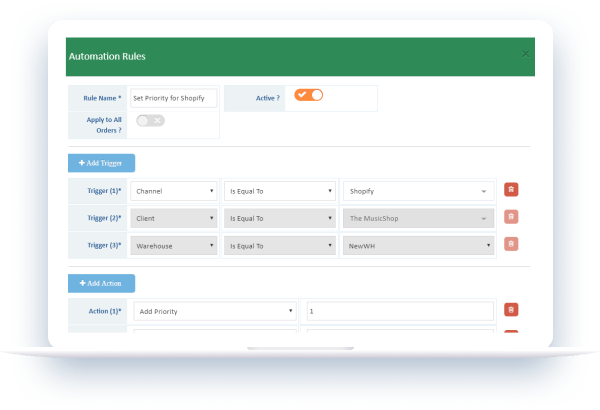
Shipping Rates Money, So Take The Time to Rate Shop
Shipping is part of the cost of doing business, so pay close attention to it! Consider the best and worst-case scenarios of ignoring your shipping rates. At best, you lose profits. At worst, your business starts operating at a loss. Neither of these scenarios is ideal. Take the time to rate shop or invest in technology that makes rate shopping easier. With better rates, you’ll do both your customers and your profit margins a favor.
How Do I Negotiate Shipping Rates?
According to benchmarking studies, shipping is typically a company’s highest fulfillment related expense. Every year, rates go up as carriers cover the cost of more last-mile deliveries for the ecommerce industry. With goliaths like Amazon intentionally losing money on shipping to win customer loyalty, how are average-sized companies supposed to compete?
The answer is: by negotiating shipping rates. Just because you aren’t Amazon, doesn’t mean you don’t represent valuable business to companies like FedEx and UPS. Especially as Amazon pulls their logistics in house. In fact, if you have an assigned account manager, this is a pretty good indication of your bargaining power.
What you possess is the opportunity to build a relationship and negotiate with someone whose job is to listen to your needs. Don’t let the idea of negotiation intimidate you. Shipping carriers use several variables to calculate their shipping rates. Check out the main parameters of your ecommerce shipping costs. Ecommerce shipping dynamics change frequently based on many parameters. Using a shipment automation rule engine helps you adapting the new market conditions.
By understanding their business model, your shipping data, and your own business requirements, you can enter into negotiations with your account manager armed with the terms and knowledge to help you save a small fortune on shipping fees. Determining the best ecommerce shipping strategy is crucial for today’s new age fulfillment businesses.
Adopt an “Everything is Negotiable” Mindset
Everything is negotiable. Before you start the process, live and breathe this mentality and keep the following in mind:
- Don’t Make the First Offer. Never show your hand first.
- Don’t Negotiate with Yourself. When you make an offer, wait for a counter-offer.
- Set a Time Limit on the Negotiating Process. Without a time limit, your carrier can stretch out the process and continue to profit off the current rates.
- Bundle. Understand what you want and then combine your asks into a package.
- Be Willing to Walk Away. Conduct research on your historical shipping data and alternative carriers, so you are firm on what offers you will and won’t accept.
- Be Pleasant, but Focused. You likely have a great relationship with your account manager, but don’t be guilted into accepting the first offer. Their job is to protect their employer’s interests. That said, keep the negotiating process light and civil.
Review Your Agreements with a Critical Eye
Go through your existing agreements with a fine-tooth comb and look for points of negotiation. And remember: everything is negotiable.
This can help you focus your efforts when you review your shipping history data. Review your agreements to determine what you’re currently paying on everything, including next-day air, second-day air, surcharges, and more.
In addition, don’t wait until your agreement ends to re-negotiate and avoid signing any addendum that penalizes you for ending your agreement early. Carriers may attempt to lock you in for a certain time period, but you never know what changes are on the horizon that may require further negotiations.
Gather and Analyze Your Shipping Data
Before you start negotiating rates, you need to know what you want. Your first step is to thoroughly understand your current shipping rates. This is essential. Your carrier understands your shipping history intimately and will use it to gain the upper hand during the negotiation process. Gather your shipping history data and analyze it to paint a clear picture of your shipping rates and shipping fees.
How can you obtain this data?
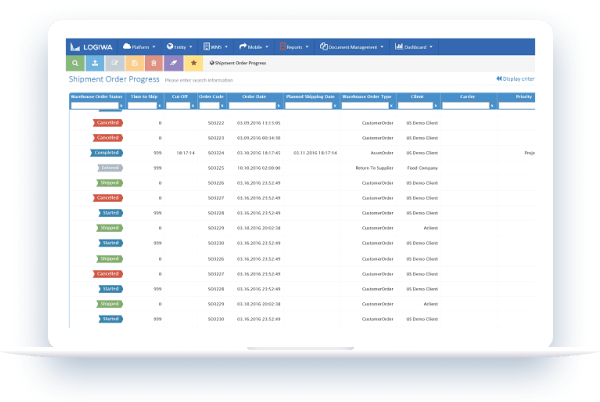
Pull From Your Shipping System
If you use an order fulfillment software or warehouse management system, it’s fairly simple to pull this data. In addition to providing real-time data, your system may automatically generate reports about your historical shipping data, which should include information on the average base rates and fees you pay each carrier.
You can pull the average weight per package shipped, the average zone, the daily average number of inbound and outbound shipments, the percentage of minimum charge shipments, and more. Your carrier will use figures like this to assess what they’re willing to bargain on during the negotiating process.
And if you use a third-party enterprise shipping system, rather than exclusively relying on one carrier’s system, you will have historical data they don’t have. This is specifically useful when assessing the following points.
Best-Way Shipping
This is real-time information on which carrier offers the best rate for a shipment. This is determined based on your package’s weight and dimensions, service levels, delivery time, and delivery zone.
If your historical data shows that you routinely receive best-way shipping from the same provider, it puts your other carriers on the defensive. It’s up to them to present a good case for why you should keep using their services.
Zone Skipping
Identify how often you use “zone skipping” opportunities. If you frequently ship from New York to California, your packages have to go through several zones, raising your overall shipping rates. By zone skipping, you send a large volume of orders to a specific zone, rather than the final destination, and then engage a cheaper carrier to facilitate last mile delivery.
In other words, you can save by shipping in bulk while also taking advantage of local rates versus national rates.
Oftentimes, zone skipping strategies use regional carriers or nationwide carriers such as UPS and DHL. This shows your carrier that a significant portion of your orders go to the same area, which means they are missing out on fees from a relatively straightforward job.
Frequent Surcharges
Surcharges are slippery things. They can show up on your invoice in a variety of disguises such as “service fees”, “accessorial charges”, or “handling charges”.
Simply put, they are charges beyond the base rate. When negotiating fees, shippers often focus on the base rate. Save yourself more money by investigating your most frequent surcharges.
While base shipping rates are updated annually or semi-annually, surcharges can be updated weekly, making it tedious for shippers to monitor. Moreover, there are all sorts of surcharges, including:
- Handling fees
- Address correction fees
- Delivery area fees
- Delivery reattempt fees
- Signature fees
By pulling information on common surcharges from your enterprise shipping system, you can be specific during the shipping rate negotiating process and go after the shipping fees that hit you hardest.
Conduct a Parcel Audit
Gathering and analyzing your data is more time-intensive if you don’t have an enterprise shipping system, but it is certainly possible. You can conduct a parcel audit which requires manually reviewing all your shipping bills.
In addition to understanding commonly charged surcharges, you can also identify inaccuracies or invalid charges. Even if you don’t have time to challenge every charge, you can plug your base charges and fees into an Excel spreadsheet and run different analyses to find the information an enterprise shipping system would pull.
Negotiate Volume Discounts Based on Sales Projections
Carriers offer volume-based discounted rates. If your business is growing fast and your sales forecast is strong, you can still benefit. Companies like FedEx offer a grace period, allowing shippers to benefit from discounts while ramping up.
Of course, if you don’t meet this sales volume by the end of the grace period, you’ll have to return to standard rates.
Strengthen Your Relationship With Your Account Manager
Your main options for negotiating rates are:
- Conducting face-to-face negotiations
- Sending out a Request for Proposal (RFP)
In both instances, you’ll need to work with your account manager. Your account manager has a lot of competing priorities. They have to liaise with operations, manage service issues, field complaints, and retain customers, and they often work evenings and weekends.
Strengthen your relationship with your account manager by understanding their day-to-day work and coming up with ways to make their job easier.
This could include improving your communication, reducing the number of last-minute requests, or alerting them to an upcoming fluctuation in shipping volumes. And if these efforts aren’t possible, kindness is priceless.
Not only will a good relationship with your account manager facilitate the negotiation process (people like working with people they like) it will also increase your chances of learning about useful service offerings or discounted rates that aren’t publicized, like association pricing.
Initiate an RFP Process
A Request for Proposal (RFP) is an efficient way to present your business needs and carrier requirements to several providers and solicit responses. An RFP is most useful for companies with high shipping volumes, since the potential business is an incentive to prepare and submit a proposal.
That said, don’t be discouraged if you think your shipping volumes are too low for an RFP. Carriers want to win as much business as possible to optimize the space in their trucks and planes.
Once you receive proposals, you can efficiently compare shipping rates between multiple providers and request more competitive offers.
Invest time into preparing your RFP as this will determine the quality and relevance of the responses you receive.
In addition, make it abundantly clear in your RFP that you are not guaranteeing any volumes.
Be sure to include the following information in your RFP:
- Business objectives
- Short-term shipping needs
- Long-term shipping goals
- Requirements from a shipping provider
- Historical shipping information/volumes
- Pricing template
- Request for guarantees on damaged goods or missed deliveries
Including requirements and business goals allows the provider to tailor their proposal and present the most compelling offering. In addition, a pricing template ensures you receive information clearly and in your desired structure.
Negotiate Contracts with Multiple Shipping Providers
Negotiate with multiple carriers. For starters, holding contracts with multiple carriers provides diversified real-time data for your enterprise shipping system. This means you can benefit from best-way shipping. Plus, you’ll be able to compare base rates as well as various surcharges and develop relationships with regional carriers, enabling you to employ zone skipping strategies when needed.
That said, be mindful that you don’t divide your shipping too thinly among providers. You don’t want to miss out on volume discounts.
FedEx
Among their other ecommerce services, FedEx offers flat-rate pricing for shipments under 50 pounds. You can find their flat-rate finder tool by clicking here. Check out Logiwa’s FedEx shipping features for further information.
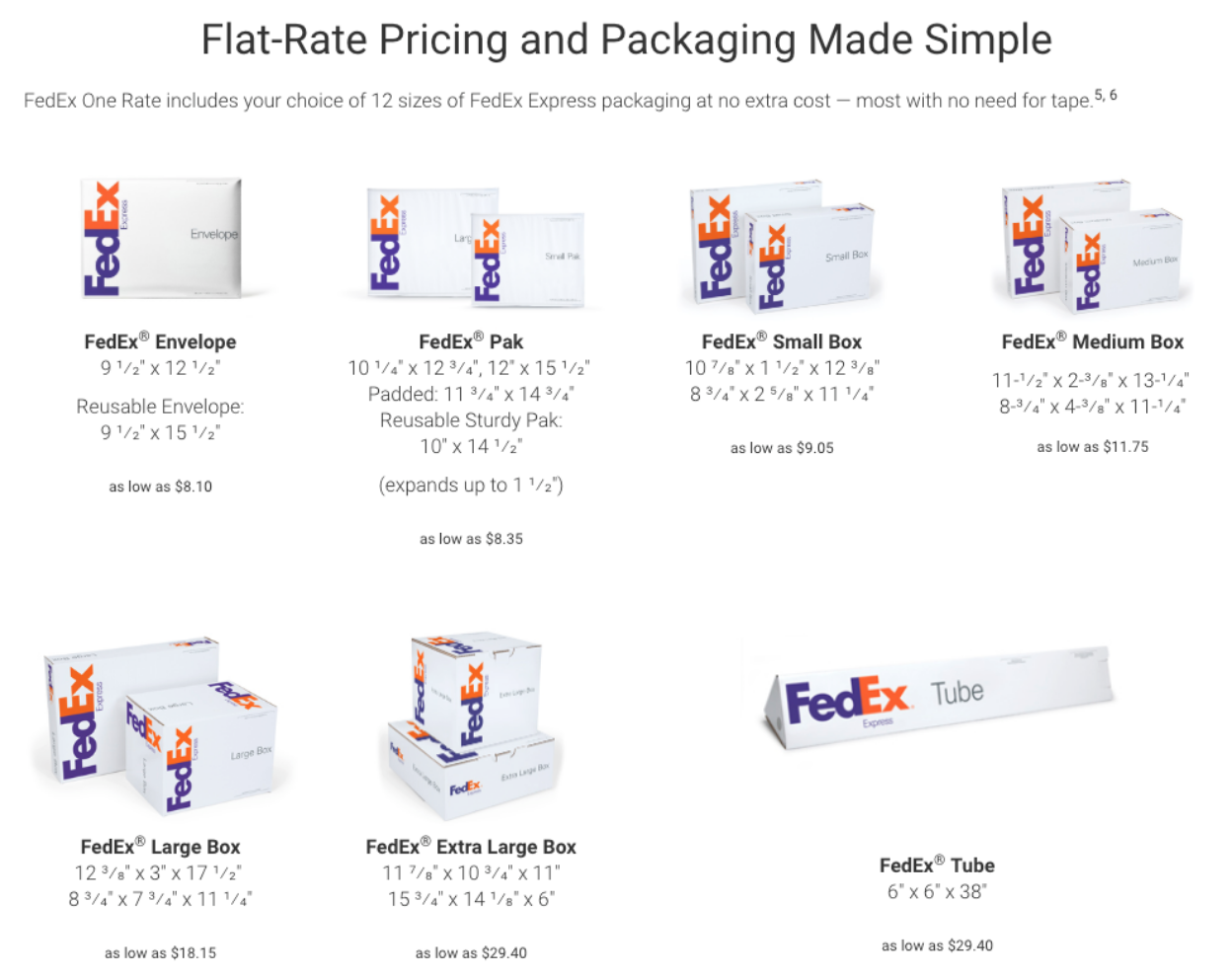
UPS
UPS offers order fulfillment in addition to shipping, which may be beneficial to your business. They don’t offer much beyond this basic rate calculator without logging into their site. Check out Logiwa’s UPS shipping features for further information.
USPS
Like its competitors, USPS also offers a host of business services. USPS has a long list of shipping rates depending on if you’re using their flat rate packaging or your own, and what priority you select. You can also try their shipping calculator. Check out Logiwa’s USPS shipping features for further information.
DHL
DHL places a lot of emphasis in their marketing on international shipping, but you can also use them for domestic shipping. Their partnership with USPS is what makes this possible. DHL offers DHL ecommerce and DHL express options for ecommerce businesses.
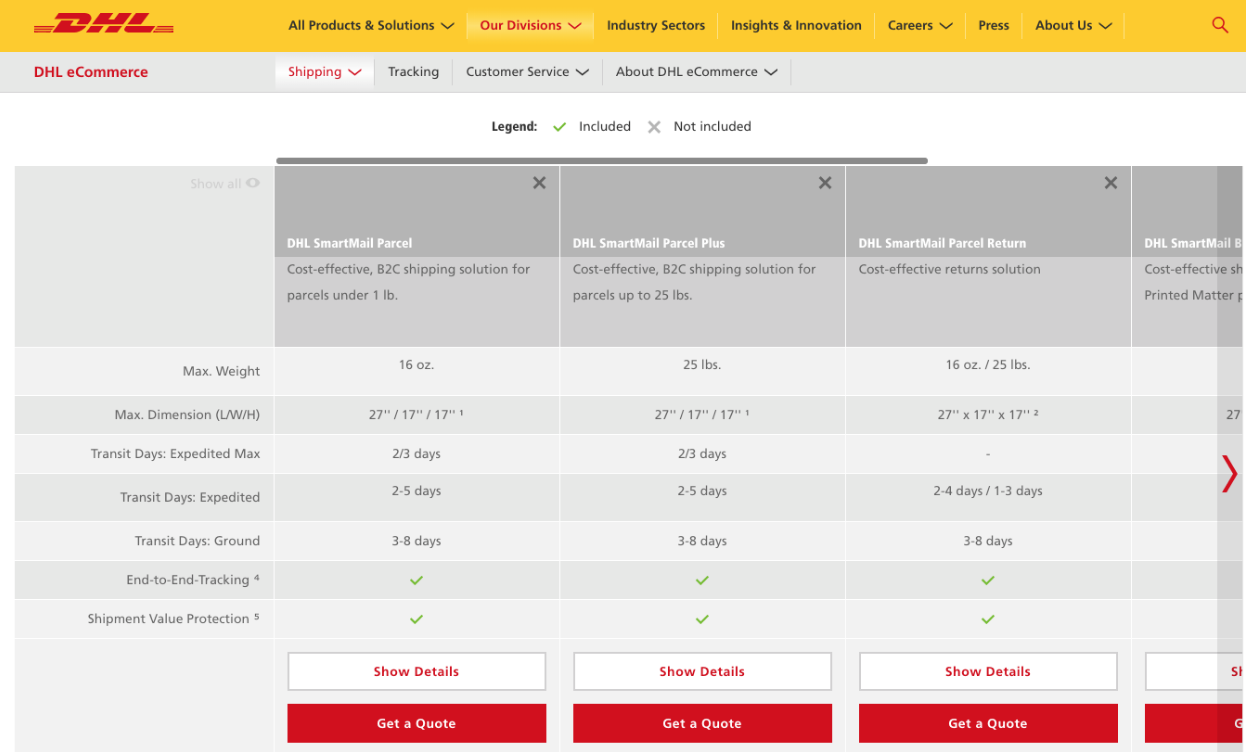
Read Your New Contract Carefully for Hidden Fees
If your negotiations or RFP results in a new contract, be sure to review the document carefully. Oftentimes, carriers will agree to your terms only to include hidden requirements, like minimum volumes, to ensure the odds are still stacked in their favor.
For instance, let’s say you negotiate a 50% discount. Presumably, this means a $20 shipment would cost $10, but in your contract, there’s a clause stipulating a minimum spend of $12. So the least amount of money you’ll pay is $12, not $10.
While this may not be an issue if you ship a high volume of goods, it’s still worth gaining full visibility over your contract, especially if this never came up during the negotiating process.
Don’t Waive Your Right to the Money Back Guarantee
Shipping carriers offer money back guarantees for late deliveries. During the negotiation process, your account manager may ask you to waive your money back guarantee as a trade-off for specific perks. Avoid waiving this right at all costs.
Negotiate Based on Your Shipping Type
Many shipping carriers now employ dimensional weight pricing. Previously, carriers priced shipments on their actual weight, regardless of the shipping box size. This means that carriers will calculate:
- The actual weight
- The weight based on the box’s dimensions
The carrier then uses the higher number to use space in their trucks efficiently. If you ship specific dimensions often, consider negotiating a rate based on this information to minimize your costs.
Consider Hiring a Parcel Shipping Consultant
If you don’t have time to commit to the negotiating process, but you think there’s a real opportunity for cost savings, consider hiring a parcel shipping consultant or broker. You can likely get reviews from your professional network.
Parcel shipping consultants can negotiate shipping rates on your behalf and realize significant cost savings. Of course, be mindful of those fees. You want to ensure the fees you pay don’t cancel out your savings.
Negotiate Your Shipping Rates to Strengthen Your Bottom Line
Shipping fees can take a big bite out of your business’s profit margins. Consider your options and analyze your costs ahead of time. Then you can enter negotiations with your shipping provider well prepared to win and protect your bottom line.
How Do I Manage Shipping Rates In Online Stores?
You’ve conducted ample market research before launching your online store and it shows. Your customers don’t just visit your website – they spend time on it! They’re browsing items and adding them to their shopping cart.
But you notice something alarming. A surprisingly low number of people are actually completing a purchase. When you take a closer look at your site you realize your e-store has a high cart abandonment rate. So what’s going on?
Perhaps your shipping rates are spooking your customers. One study found that at least 60% of customers abandon their shopping carts because of high shipping, taxes, and fees. Another 23% of customers ditched their carts because calculating their total cost was too difficult.
How can you manage this challenge? The shipping price you charge your customers is, after all, a reflection of your own shipping rates, which aren’t cheap. You also can’t afford to ignore your high cart abandonment rate, leaving you in an awful catch-22:
- Keep your shipping rates as they are, miss sales opportunities, and eventually go out of business.
- Offer low or free shipping, lose money by covering the difference yourself, and eventually go out of business.
Fortunately, there is a third option where you can combine smart pricing strategies with an enhanced customer experience to keep your shipping rates low, your customers happy, and your business thriving.
SHIPMENT RULE AUTOMATION: Before you read further, check out our shipment rule automation features to optimize your shipping rates.
How Is Your Shipping Cost Determined?
Your shipping cost is the cost of getting your product from Point A to Point B.
Your shipping price is how much customers pay you to get your product from Point A to Point B. Since the idea of making a profit on shipping is more of a fantasy than a reality, most retailers just want to break even.
But just breaking even can be incredibly difficult because most people don’t view shipping as something that adds value and they simply don’t want to pay for it. It’s entirely possible that a customer arrives on your checkout page willing and able to spend $300, but abandons the purchase because of a $25 shipping fee.
Before you can determine your shipping price, you should understand how your shipping rates are calculated. Among others, these key variables determine your cost:
- Origin address & destination address
- Weight or dimensional weight pricing
- Delivery speed
- Packaging materials
- Handling within the distribution center or warehouse
Origin or Destination
Carriers use “shipping zones” to determine the distance portion of your cost. Instead of using miles to track distance, carriers divide the country by zip codes. For domestic U.S. shipping, there are 8 zones in total.
Somewhat counterintuitively, the zones are not pre-established. Instead, the origin address is always classified as Zone 1 and the final destination is classified by how far it is from the origin, with the highest possible classification being Zone 8. The higher the zone, the pricier the shipment.
For instance, if you wished to ship from Tampa to Atlanta, your package would move from Zone 1 to Zone 4.
If you wanted to ship a package from Atlanta to Denver, your package would move from Zone 1 to Zone 6.
Weight or Dimensional Weight Pricing
Carriers also charge customers based on weight or dimensional weight pricing. Dimensional weight pricing is when the shipment’s weight is based on the length, weight, and height of the box, not how much it actually weights. Carriers opt for this method to make up for the space your package takes up in a truck, even if it isn’t particularly heavy.
For this reason, it’s smart for retailers to choose an appropriately-sized box rather than quickly throwing their goods into the first package they find. Not only will they save on the transportation of the goods, they’ll also save on packaging materials.
Delivery Speed
The faster you want a package to arrive, the more expensive it will be. This is one part of the customer experience that causes a lot of anguish for e-retailers, with Amazon consistently raising the bar in online shopping experiences.
This perpetual bar-raising has created what’s known as the “Amazon Effect,” where small- and mid-sized retailers are forced to try and keep up with a huge corporation with endless resources.
According to a global ecommerce study by Pitney Bowes, two-day delivery is the new standard expectation among customers, while three- or four-day shipping is considered “acceptable.”
This puts e-retailers in a never-ending arms race with Amazon. Even if an e-retailer’s sales go up, its profits go down because all of its money is spent offering quick shipping at a low rate just to remain relevant.
Packaging Materials
Retailers spend about $1 on packaging for every $11 they spend on the product itself. it’s important to to be purposeful about how you select boxes and packaging materials.
Some retailers only use oversized boxes because they don’t have a large variety and simply order the largest size available to make things easy. This isn’t just wasteful, it’s also unnecessarily expensive when dimensional weight pricing is used.
A good alternative is to evaluate your average shipment size and purchase boxes that fit this sweet spot. This way, you won’t spend a fortune on a variety of boxes you’ll never use.
Beyond picking the right size boxes, investing in proper packaging materials is a good way to save money.
FREE DOWNLOAD: Ready to get started? Download our Packing Slip Excel Template and start printing your packing lists today.
When your products aren’t properly packaged with protective materials, there’s a higher chance of damage, leading to more product returns. You lose money on the cost of shipping, you lose money on the lost sale, and you potentially lose future sales if that customer doesn’t order from your brand again. Failing to use enough packaging materials due to cost is a penny wise and a pound foolish.
Handling Within The Distribution Center or Warehouse
Shipping rates aren’t limited to the actual transportation of the product. Another contributing factor is the amount of time it takes to prep an order for the outbound trucks. There are a number of time-consuming, packaging-related tasks in your warehouse or distribution center, such as:
- Constructing corrugated cardboard boxes
- Assembling and securing cartons
- Inserting dividers or stuffing materials
- Taping and securing boxes
If you use automated equipment to manage these processes, the cost of that machinery factors into your overall shipping rates.
What Are The Most Popular Shipping Cost Strategies?
Online retailers have three main options for their shipping cost strategy—their plan to cover their shipping rates while keeping customers happy.
- Calculated Shipping Rate
- Fixed Shipping Rate
- Free Shipping
Each strategy comes with its own pros and cons.
Calculated Shipping Rate
With the calculated shipping rate, you calculate your exact shipping cost and then pass the entire cost on to the customer.
The obvious advantage of this strategy is that you recoup the cost of shipping.
The obvious disadvantage is that eCommerce metrics show customers will ditch hundreds of dollars’ worth of merchandise in their shopping cart if they’re going to be charged even a relatively small shipping fee.
The other big challenge is integrating real-time shipping rate calculations into your online store.
Those customers who are willing to pay shipping, and especially expensive shipping, want transparency. This means that online retailers must provide some way for customers to calculate their shipping rates and choose between various shipping options.
For instance, while they may prefer 2-day shipping, if your brand and products are good enough, customers may be willing to wait 6 or 7 days and pay a lower shipping rate, depending on the delivery distance.
One survey of Shopify stores found that 80% of online retailers overcharge their customers when they manually set their own shipping rates.
In the short term, this leads to cart abandonment. In the long term, this leads to reduced customer loyalty if customers realize shipping is a profit area for the business.
Plus, if you have customers across the country, your shipping rates will vary greatly, making it difficult to set a reasonable rate across the board.
So what are your options if you want to display and charge real-time shipping rates?
First, you need real-time carrier shipping tools that enable your website to automatically pull shipping rates from carriers and display them on your checkout page. Information like the weight and dimensions of your product, your customer’s address, and other necessary variables are used to produce a rate.
Ecommerce vendor Shopify offers real-time carrier rates for its customers. Other tools like BigCommerce, Ecwid, Shippo, and ShipStation also allow customers to access real-time rates from a range of carriers including USPS, Canada Post, UPS, FedEx, and more.
Fixed Shipping Rate
In a fixed rate approach, the retailer sets a fixed shipping cost rather than calculating the exact cost based on weight, destination address, and dimensions,.
The greatest advantage to this pricing model is that your customers know what they’re signing up for. It’s also a great marketing strategy if you want to promote your online store.
The disadvantage is that, depending on your customers’ addresses, this won’t always cover your shipping rates.
It’s also tricky when it comes to international shipments. With domestic rates, an online retailer can look at their average shipping rates and choose a sweet spot for a fixed shipping rate. On the other hand, it’s more difficult to calculate landing costs like taxes and duties for international shipments, and these are often billed to the customer after the product has been delivered.
Sticker shock at the customer’s doorstep isn’t ideal. Unexpected costs undermine the customer experience and increase the chances of the customer rejecting the delivery and returning the product, meaning the online store loses the sale and incurs additional costs.
Free Shipping
When companies say “free shipping,” it isn’t actually free. Someone has to pay the shipping cost.
When a retailer offers free shipping they are typically doing one of two things:
- Paying for the shipping rates themselves with the hope of attracting customers who will spend more (making the short-term financial hit worthwhile)
- Passing the shipping rates on to customers indirectly by making it part of their product pricing strategy
Then, less commonly, there’s the Amazon model where customers pay for Prime membership and benefit from free two-day shipping. While it’s worth mentioning, this isn’t a feasible option for many online retailers since Amazon can afford to lose money on shipping thanks to its highly profitable cloud computing business.
Before offering “free” shipping, ask yourself the following:
- Does your business have a large enough order volume to negotiate shipping rates with your carriers?
- Can your business afford to pay for free shipping based on your current profit margins?
- What percentage of your business is domestic and what percentage of your business is international? Can your business withstand the unpredictability of free international shipping?
- If you need to raise the price of your products, are your products differentiated and valuable enough that a price increase won’t alienate your customers?
- Are you willing to implement a minimum order requirement to activate the free shipping perk?
Someone’s paying for that free shipping, so it’s important to carefully design your “free shipping” benefit to keep your business sustainable and keep your customers happy.
What About “Free Shipping” After a Certain Amount?
Some retailers are incentivizing higher purchase amounts by offering free shipping. For example, if customers spend more than $99 at JCPenney’s, their order will ship at no cost to them. This mental flip puts the responsibility of free shipping on the customer. Once they cross the $99 mark, they “win” and get free shipping.
If your customers have an average purchase amount that leaves you with enough of a margin to offer free shipping, it may benefit your business to incentivize your shipping as well.
What If You Just Forget About Shipping Rates Altogether?
As a general rule, it’s important for online retailers to pay attention to their shipping rates. But, there’s another more unorthodox approach that retailers can take when it comes to shipping strategy: not thinking too much about their shipping rates at all. Instead, focus time, effort and investments in creating and marketing an excellent product with a compelling brand.
When a product is good, customers are willing to wait a little longer or spend a little extra money to get it in their hands. In this case, all the online retailer needs to do is integrate real-time shipping rates into the checkout page and automatically cover their shipping rates.
So, how can you get customers to accept higher shipping rates via improved product value?
- Incorporate customer feedback and suggestions into product offerings and product designs
- Differentiate your products from competitors
- Create an excellent customer experience by authentically engaging with customers
- Tell an engaging brand story that helps customers feel like they are part of a movement or a community rather than a participant in a transaction
Managing Shipping Rates Is a Complicated But Vital Part of an Online Business
Effectively managing shipping rates is a frustrating component of running an online business, but it can’t be ignored. Luckily, there are more tools than ever to help online retailers successfully manage their outbound logistics in a cost-efficient way. First, they need to analyze their numbers and decide on a shipping rate strategy so they can keep both their customers and their bottom line happy.
Related Terms
FedEx Drop-Off
With FedEx Drop-off, you can easily pick up and drop off packages near you. But is it really as easy as it sounds?
Eco-Friendly Packaging
Eco-friendly packaging has become increasingly prevalent to the world, as well as consumers. Learn about sustainable methods and the benefits of green packaging in this article by Logiwa.
Retail Arbitrage
Retail arbitrage entails a simple process of buying discounted items from a retailer and reselling them at a higher price point, but there’s plenty of pros and cons to consider. Learn about the risks and rewards in this latest article by Logiwa.
3PL Meaning
Wondering about the meaning of 3PL? We’ve got answers! We define 3PL (third-party logistics) & clarify its various components.
eBay Seller Hub
eBay’s Seller Hub remains a top ecommerce site by offering centralized seller tools, data to increase profits and ease of usability. Learn how to navigate eBay’s Seller Hub in this latest article from Logiwa!
The Leading Supply Chain Management Software for “New Age” B2C/B2B Fulfillment Businesses
Warehouse Management
Modern digital WMS powers a modern fulfillment experience
Inventory Management
Improve your inventory across your supply chain.







